THE PERSIAN EMPIRE - History's First Superpower
The mid to late 6th century BC saw the rise of the first world superpower in the Middle East. From humble beginnings deep in Iran, a lineage of Persian kings, known as the Achaemenids, emerged to dominate the region, creating an empire that stretched from the Indus Valley all the way to the Aegean, and from Egypt up to Central Asia. 2 centuries later, the Achaemenid Persian empire would meet its end at the hands of the Macedonian king, Alexander the Great. Persian rule would later revive itself under the Parthians, ruling much of the Middle East and Iran from the 3rd century BC to the 3rd century AD, who in turn would be succeeded by the Sassanid Dynasty, who ruled until the Muslim conquests in the 7th century AD, coming to heavy blows with the eastern half of the Roman Empire. But for this blog, and for blogs to come in the near future, we’re only interested in the first - and arguably most successful - dynasty of Iranian Shah’s, or kings: the Achaemenids.
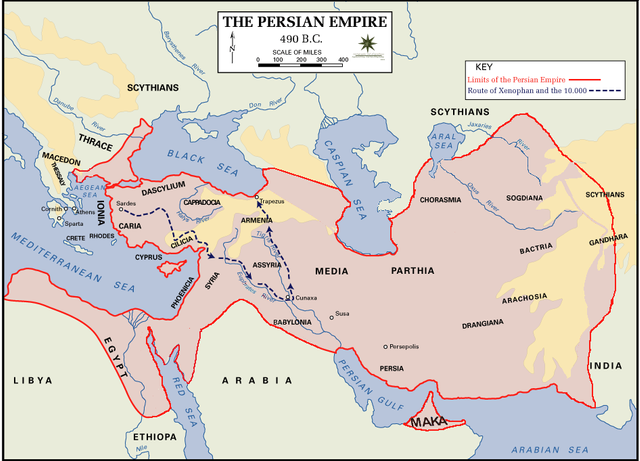
(ABOVE: A map of the Achaemenid Empire's maximum extent under Darius I, c.490 BC)
THE LANDS OF THE PERSIANS
Persis (Fars) was a landlocked nation snugly placed below the Zagros Mountains, which today separate the Iraqi and Iranian borders. This poor landscape was hard and rugged, and produced a people as such, trained in the arts of archery and slingshots and thus they made brilliant infantrymen. However, they still needed a leader capable of bringing them out of their confines of chieftains to harness this hardihood
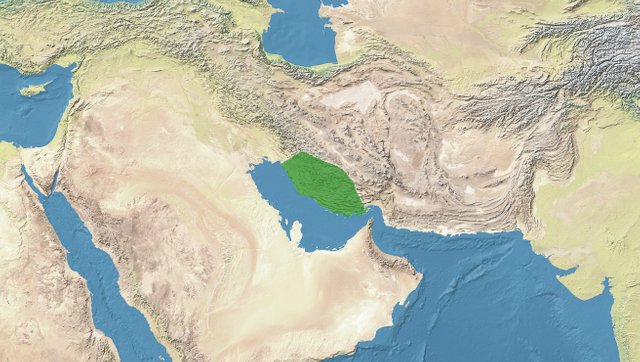
(ABOVE: The homeland of the Persians, known as "Persis" or "Fars")
Reigning from 559 to 530 BC, the Persian Empire was brought about by the growing conquests of Cyrus the Great. It was founded atop the ruins of other empires before it, as befits most world empires in history, but unlike empires before it, it didn’t confine itself to its nearby regions in the Middle East: it expanded into Egypt, Europe and even India. As once-vassals of the Median Empire, the Persians originally lived just in the high-up valleys around Anshan, east of what is now known as the Persian Gulf which was, back then, several kilometres inland from its modern-day location.
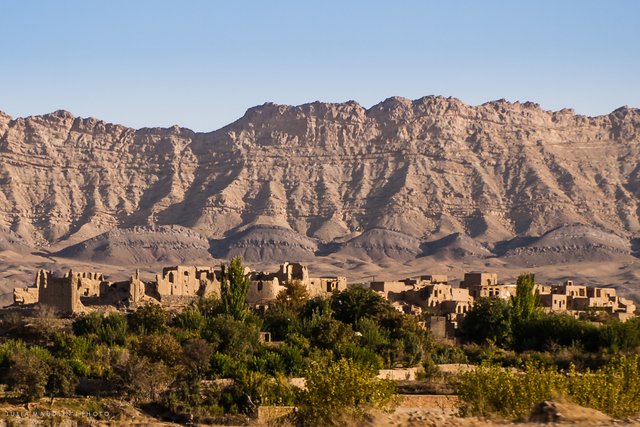
(ABOVE: A modern-day mud village underneath the Iranian landscape of the Karkas Mountains)
THE EMPIRE'S EXPANSIONS
As per Persian traditions, Cyrus II founded the Achaemenid Dynasty. His Iranian lands of Parsa had previously been a vassal of the Median Empire (an empire stretching through Iraq, Iran, Central Asia and Anatolia, and it was the largest empire of the day) under their king, Astyages. By 550 BC, Cyrus had defeated Astyages, and the Medes were no more. By 539 BC, he had conquered Babylon and famously freed the captive Jewish population being held there. His heir, Cambyses II, (reigned from 529 to 522 BC) conquered the Egyptians, before his brother Bardiya led a revolt that resulted in his assassination. Cambyses’ heir, Darius I, (now known commonly as Darius the Great) reigned from 521 until 486 BC, taking the empire to its territorial heights, taking in parts of India, Libya, Central Asia and Europe into his domain. His advances into Greece were famously halted by the Athenians and Plataeans at the Battle of Marathon in 490 BC. The decade after Darius’s Greek invasion saw his son Xerxes (r. 486 - 465 BC) try again with a much larger army, yet after a costly victory at Thermopylae, he failed to fully subdue the Greek states and was forced to retreat to Persia by 479 BC. It was these 2 failed expeditions that saw the Persian kings halt their further ambitions for further conquests.
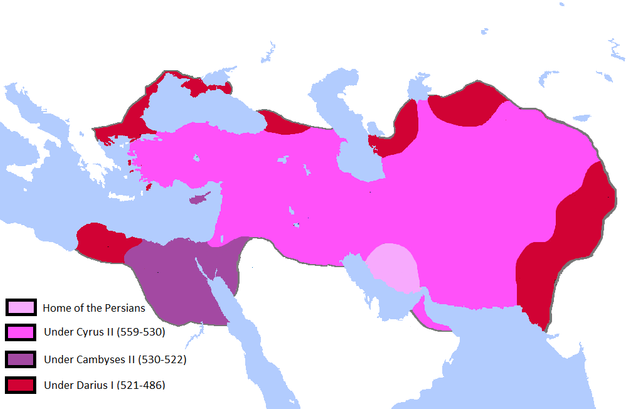
(ABOVE: The territorial expansions of Cyrus II, Cambyses II and Darius I from 559-490 BC)
PERSIAN RELIGION
Zoroastrianism was the dominant Persian religion. It was a fusion religion of old Iranian beliefs mixed in with the teachings of the prophet Zoroaster. His exact lifetime isn’t well known, but best guesses say he lived anywhere between 1000 BC and the 7th century BC. His preachings taught of a duelist faith between the deities Ahura Mazda, the supreme god and personification of good, and Angra Mainyu, the spirit of darkness. The religion was based on the struggle for dominance between the two deities. The Achaemenids did look up to other deities beyond just these two and they may not all have been purely Zoroastrian. The Achaemenid successors, the Parthians, did set up a series of fire altars across the empire, whose flames burnt constantly as a symbol of purity. The later Sassanid Dynasty used Zoroastrianism as their state religion, even to the point of persecuting people who followed other faiths, despite Achaemenid teachings wanting to include all religions within the empire.
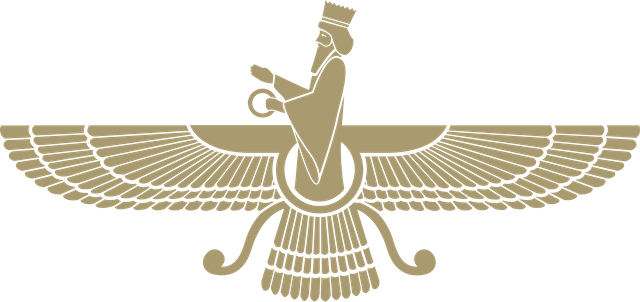
(ABOVE: Fravashis, the winged guardian spirits which guided and protected people through their lives)
Sometime in the 6th century BC, Zoroastrianism became the official state religion for the Persian Empire. Named after the prophet Zoroaster (Zarathustra) who founded it, the religion’s mortal teachings etched their way into several other religions that followed it, such as the concepts of Heaven and Hell, a holy path, and the concepts of Judgement Day and “Good Thoughts, Good Words, Good Deeds”. The use and symbolism of fire was an essential part of Zoroastrianism as it represented the sole creator God, Ahura Mazda. Dualism was a very significant concept in Zoroastrianism - that is, the ever-occurring battle of morals between Good and Evil which exists in all people, and which in turn is seen again on the grander cosmic scale.
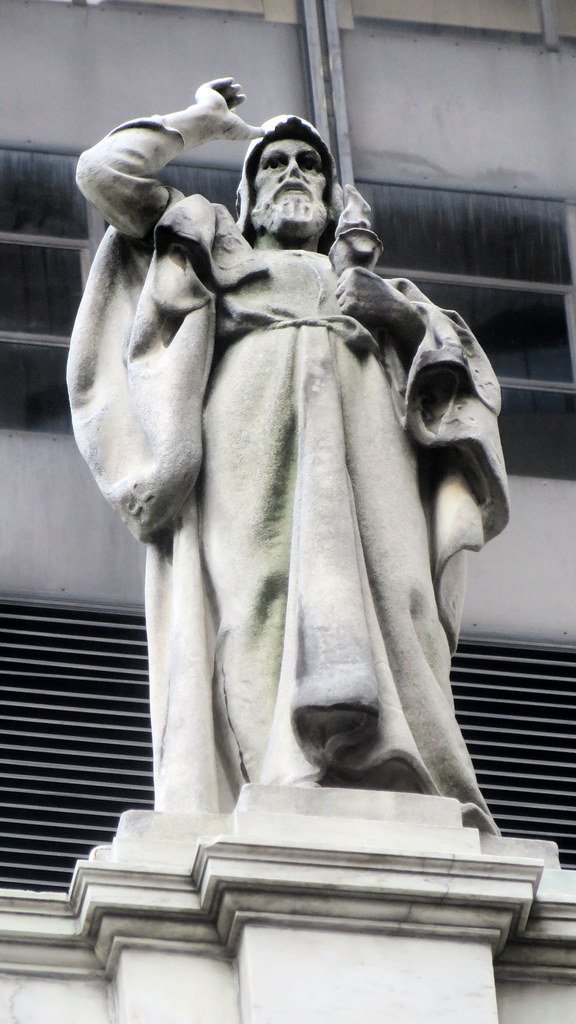
(ABOVE: Sculpture of Zoroaster by Edward Clark Potter)
The core belief in Zoroastrianism is the constant duel between Good and Evil - that is, truth and lies. It’s ultimately the core concept that inspired later religions after it, including Christianity which explained the Good versus Evil fight in the form of God versus Satan. The Greeks too were impressed by a monotheist religion not requiring an abundance of temples, shrines and overly complicated religious rituals and prayers in order to keep people in line like other religions and cults have done. What’s more impressive is that the Achaemenid kings never sought to disrupt the cultural norm of the places that they conquered, and even took up titles and rituals associated with these religions; they commonly adopted administrative practices, worshipped outsider deities (Achaemenid kings were known in Egypt as “Servants of Amun-Re” and bore all of the titles of the pharaohs) and governed the local satrapies in the local languages. Since Cyrus, Achaemenid rulers even openly worshipped Marduk, the patron God of Babylon, proclaiming:
“I am Cyrus, king of the world, great king, legitimate king, king of Babylon, king of Sumer and Akkad, king of the four rims (of the Earth), son of Cambyses, great king, king of Anshan, grandson of Cyrus, great king, king of Anshan, descendent of Teispes, great king, king of Anshan, of a family (which) always (exercised) kingship; whose rule Bel and Nebo love, whom they want as king to please their hearts.”
- “Ancient Near Eastern Texts”, pg. 316
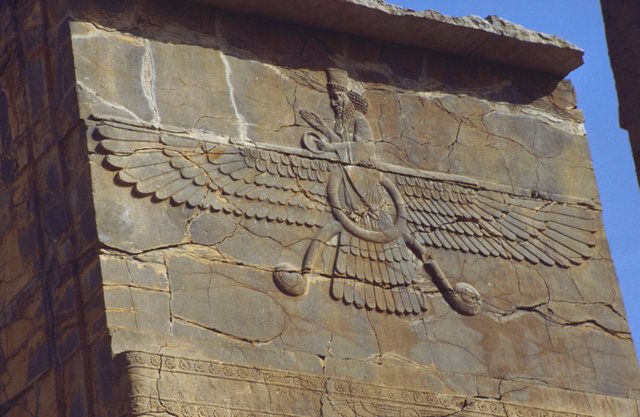
(ABOVE: Relief of Ahura Mazda)
In Persia, the king was known as the king “by the favour of Ahura Mazda”:
“A great God is Ahura Mazda, who created this Earth, who created yonder sky, who created man, who created happiness for man, who made Darius king, one king of many, one lord of many. I am Darius the Great King, King of Kings, King of countries containing all kinds of men, King in this great Earth far and wide, son of Hystaspes, an Achaemenian, a Persian, son of a Persian, an Aryan, having Aryan lineage."
- Darius’ “Naqa-i-Rustam inscription”, R.G. Kent., “Old Persian”, pg. 138
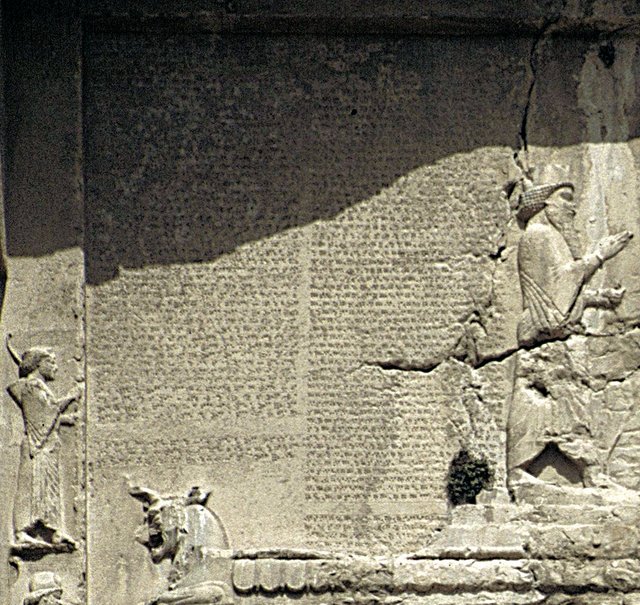
(ABOVE: Darius's Rustam Inscription in Old Persian)
Under the reign of Darius, Zoroastrianism became the official state religion. While it provided a cohesive sense of identity to all who followed it across the empire, Darius never imposed this religion on those who already followed other religions and did not wish to change their views.
IRAN
As a little FYI: “Persia” has been the commonly used name for what was historically always referred to by its own people as “Iran”. In 1935, on the Nowruz (Iranian New Year), Reza Shah asked foreign emissaries to begin using the name “Iran” instead in formal correspondences. In 1959, the government under Reza Shah’s son of the same name announced that “Persia” was still OK to use interchangeably in formal correspondence, but the issue today is still up for some debate.
(ABOVE: Map of modern-day Iran showing antiquity sites, including the Achaemenid city of Susa)
--
SOURCES:
• Herodotus's "The Histories"
• Oswyn Murray's "Early Greece"
• Robin Osborne's "Greece in the Making, 1200 - 479 BC"
• Philip Parker's "World History"
• National Geographic's "The Most Influential Figures of Ancient History"
• Nic Field's "Thermopylae 480 BC"
--
YOUTUBE LINKS
(I DO NOT own these videos)
Epimetheus's "Empires of Ancient Persia explained in 10 minutes ( History of Iran )"
Overly Sarcastic Productions' "History Summarized: Ancient Persia"
This is only the first part in many blogs to come on the Achaemenid Empire.
Go and check out my next blog on ancient Persian history detailing the early conquests of CYRUS THE GREAT:
https://steemit.com/hive-133974/@oo7harv/cyrus-the-great-conquests-of-media-and-lydia
Any and all feedback is welcome.
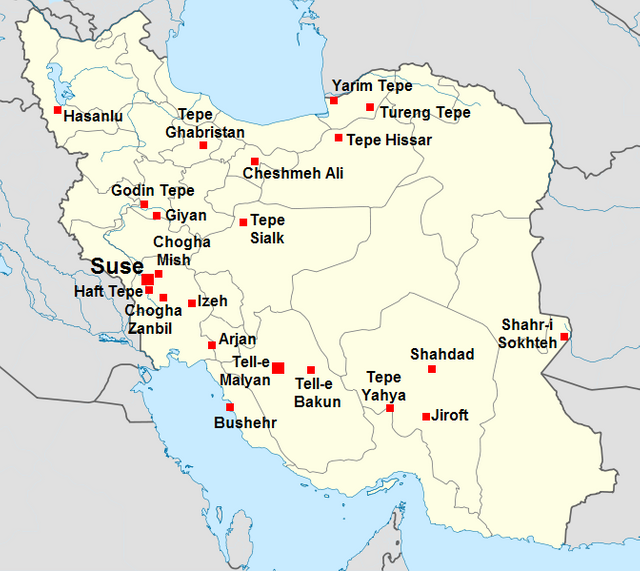
! trdo 👍🏾 @tipu curate